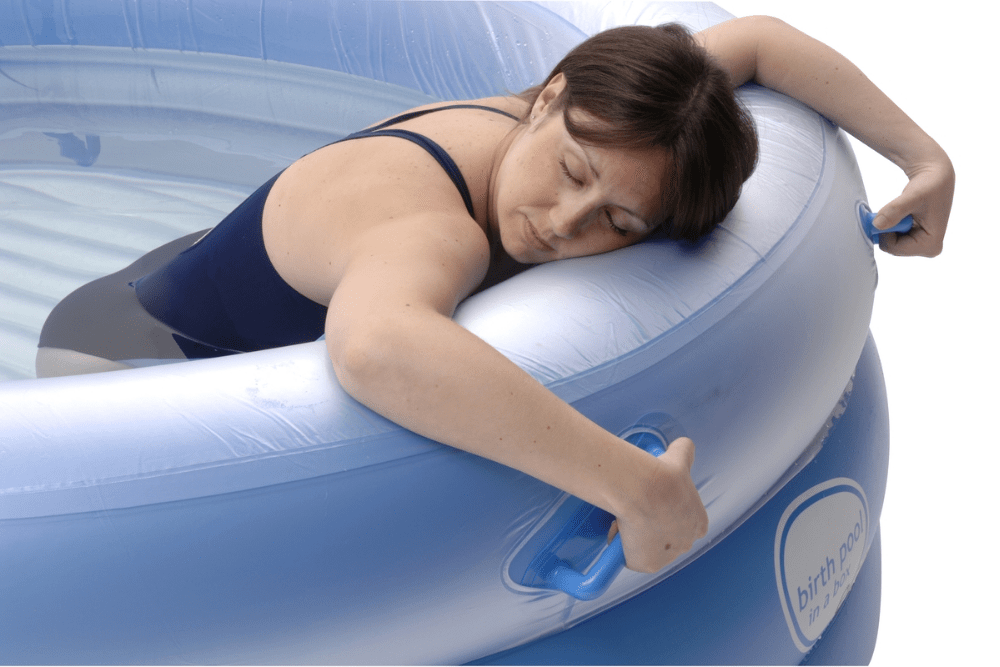PBB has put together a list of frequently asked questions, and answers, to help you as you make decisions about purchasing and using a birth pool for labour and birth. Researching your options in pregnancy helps you decide whether or not a pool is right for you, which pool suits you best, and how to set up and pack up your birth pool If you have questions we have not answered here, please contact us directly by either email sales@pregnancy.com.au or phone 1300 MIDWYF (1300 643 993) for further information.

When will I receive my order?
Most orders are usually shipped within one business day. Delivery time depends on the area in which you live and how your order was sent (i.e. Australia Post or courier). Delivery can vary between 1 to 16 business days. If there is a delay in dispatching your order we will contact you. If you have a special requirement, such as overnight delivery, please let us know and we will do our best to accommodate your needs.
Who can I call with questions?
The Water Birth Articles section of the PBB website offers a wealth of information to assist you, including step-by-step instructions on how to set up and pack up a pool, as well as articles on the history and benefits of water birth. For other questions or to report a pool fault, please contact Pregnancy Birth and Beyond on 1300 MIDWYF (1300 643 993).
How high should I fill the pool?
At least 45 cm of water depth is required. In order to create true immersion, you require enough water to comfortably cover your pregnant belly. Research shows this creates a buoyancy effect which produces the chemical and hormonal changes that facilitate a more rapid and positive birth.
How do I set up the birth pool?
Most pools come with clear instructions on set-up. In addition, a comprehensive article is available on the PBB website entitled Setting Up a Birth Pool. You will need an electric air pump to inflate your pool, and a suitable hose and tap adapter to fill it.
How long does it take to inflate the birth pool?
Depending on the pool you choose, it can take between 5 and 15 minutes to inflate a birth pool with an electric air pump. However keep in mind that the area needs to be prepared, the liner fitted and the pool filled before it can be used. It is best to set up your pool as soon as labour is established, and ready to be filled.
How do I fill the pool?
The pool is filled using a hose attached to a tap which supplies both hot and cold water. A new hose must be used as an old hose can contain bacteria. Consider using a drinking water hose, as many garden hoses are made of polyvinyl chloride (PVC), which uses lead as a stabilizer.
When do I fill the birth pool?
If this is your first baby a guide is to begin filling the pool when contractions are strong and regular, and around 3-4 minutes apart for at least one hour. If this is your second or subsequent baby we suggest starting filling the pool when the contractions are regular and increasing in intensity. This is just a guide. Labour can be slow or fast and it can be a little difficult to get the ideal timing right.
How much does a birth pool weigh when filled?
Depending on which pool you choose and how high you fill it, a filled birth pool can weigh between 330 kg and 720 kg on average. Translated, if the floor in the room you are considering placing the pool couldn’t carry 10 to 12 people standing together, you should select a different location.
Do I treat the water?
Water treatment is not required or advisable. Standard tap water is fine for your pool. A new hose must be used to fill it, as an old hose can contain bacteria. Consider using a drinking water hose, as many garden hoses are made of polyvinyl chloride (PVC), which uses lead as a stabilizer. You will need to keep the water as clean as possible. Stools and blood clots should be immediately removed from the pool using a debris net.
What temperature should the water be?
The water should be at body temperature, which is in the range of 35 to 37 degrees. Water temperature should not exceed 37 degrees. You can check the pool temperature using a new, clean bath thermometer (the kind used for children’s baths).
How do I maintain the temperature?
You will need a source of hot water to keep the temperature comfortable. To raise or lower the pool temperature, remove some water with a new, clean bucket and top up with either hot or cold water as required.
Use a clean thermometer to monitor the temperature and adjust it. We recommend a bucket of hot water every couple of hours. If you’re topping up the birth pool from a kettle, make sure you add the water away from the sides of the pool and the mother.
If your pool has a cover, ensure this is kept on while the pool is not in use. This will help to minimise the need for top-ups. Placing a thick blanket or quilt under the pool prior to set up will help to reduce heat loss through the floor.
Is there a heater for inflatable birth pools?
At present, there is no safe heater made for inflatable birth pools.
Is there a warranty period on the birth pool? If yes, what is it?
Each birth pool comes with a different warranty. Check the manufacturer’s instructions for details.
What if the mother needs to urinate?
To ensure bacteria levels are kept to a minimum, the woman ideally needs to leave the pool to urinate.
Is there a weight restriction for using the birth pool?
Women of all different sizes have used birth pools. Research does not clearly show specific weight restrictions for birth pools. Women within standard weight ranges for pregnancy should not be concerned. If you are well above these standard ranges in weight, consider seeking the advice of your midwife or doctor in regards to any restrictions in using birth pools.
How do I empty the pool?
Emptying the pool is easy by using a birth pool drainer or siphon. The hose used to fill the pool can be used to empty it. The hose should then be discarded as there is no way to ensure it is 100% clean.
What is the fastest way to deflate the birth pool?
The birth pool can be deflated quickly using an electric air pump.
How many times can I use the birth pool before replacing it?
Some pools are designed for single use only while others can be used many times. Before purchasing a pool it is important to consider this point. A handy birth pool comparison chart is available on the PBB website to assist your birth pool selection.
Is there a storage unit I can keep my birth pool in?
Specific storage containers are not available. Provided the pool is thoroughly dried, it can be packed in any new, clean, lidded plastic storage container of a suitable size. However, if you are buying a single-use pool, storage is probably not a consideration.
What are the benefits of birthing in a birth pool?
- Warm water is soothing and comforting promoting physical relaxation which in turn allows the mother to relax mentally and focus on the birth process
- Using a birth pool increases your comfort in labour
- Buoyancy lessens body weight, allowing free movement and positioning
- Buoyancy also promotes more efficient uterine contractions and improved blood circulation resulting in better oxygenation of the uterine muscles, less pain for the mother, and more oxygen for the baby
- Immersion can help to lower high blood pressure caused by anxiety. Water seems to reduce stress-related hormones, allowing the mother’s body to produce endorphins which serve as pain-inhibitors
- Water causes the perineum to become more elastic and relaxed, reducing the incidence and severity of tearing and the need for an episiotomy and stitches
- Water provides a greater sense of privacy, can reduce inhibitions, anxiety, and fears, and protects the mother from interventions by giving her a protected private space
- Water provides an environment similar to the amniotic sac providing a gentler transition for baby
- Water eases the stress of the birth on your baby thus increasing reassurance and a sense of security
Page revised on 20th December 2021

 Wish List
Wish List
Recent Comments